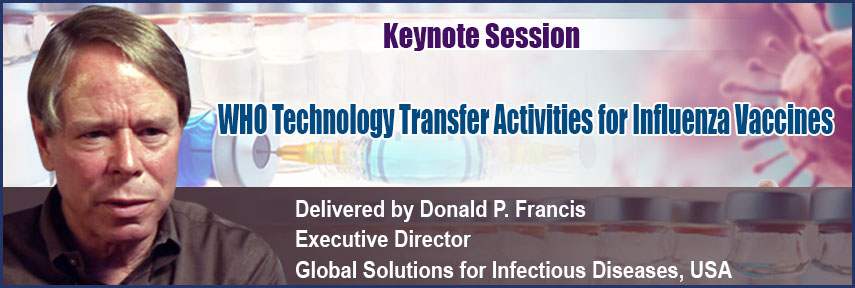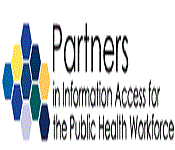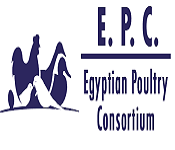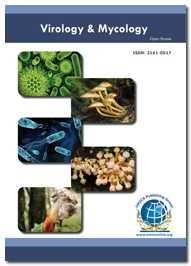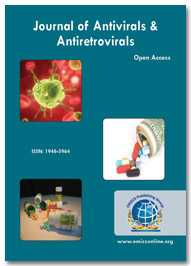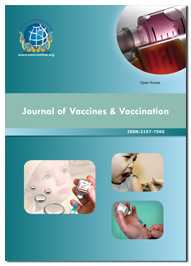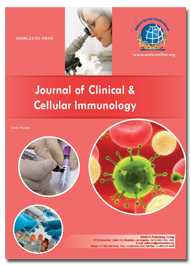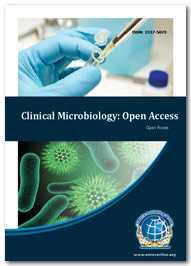Theme: Scientific Milestones in Understanding and Preventing Flu
Flu-2016
Track 1: Flu Vaccines: Current and Novel Approach
Flu Vaccine can be defined as a biological preparation that provides active acquired immunity to a flu disease. For improving vaccine immunogenicity adjuvants are used. Vaccine Adjuvants – It can be defined as a component which potentiates the immune system and accelerates the immune responses to an antigen. These components act to induce, prolong, and enhance antigen-specific immune responses when used in combination with specific vaccine antigens. Aluminum salts are the only licensed adjuvant in the United States, but the combination of these salts with inactivated influenza A/H5N1 antigens has had little effect on seroresponses. Several oil-in-water adjuvants, including MF59 and AS03, have significantly enhanced immune responses in healthy adult vaccine recipients to inactivated influenza A/H5N1. In the United States, NIAID laboratories are developing novel vaccine candidates for seasonal influenza viruses and for avian strains with pandemic potential. In late 2006, the NIAID Vaccine Research Center initiated the first human trial of an investigational DNA vaccine against the H5N1 avian influenza virus, a strain that has infected and continues to threaten humans. In addition, researchers in the NIAID Laboratory of Infectious Diseases are working with MedImmune to generate candidate live-attenuated vaccines for a broad range of influenza subtypes with pandemic potential. To date, five of these vaccine candidates have advanced to Phase I clinical trials. Many Ebola vaccine candidates had been developed in the decade prior to 2014, but none has yet been approved for clinical use in humans.
Flu vaccine market is estimated at $2.9 billion in 2011 to $3.8 billion by 2018. In USA vaccine market growth is $1.6 billion in 2011 to $2.2 billion in 2018.
Related Conference on Flu Vaccine
2nd International Conference on Influenza September 12-13 2016, Germany; 3rd Euro-Global Emerging Infectious Diseases Conferences September 5-6, 2016 Frankfurt, Germany; 3rd Euro-Global Conference on Infectious Diseases September 5-6 2016, Germany; 14th Annual Congress on Influenza Respiratory Diseases & Infections : Vaccines and Therapeutics December 01-02 2016, USA; International Conference on Travel Medicine, Vaccines & Therapeutics August 1-2 2016, USA; World Congress on Children Vaccines October 10-12 2016, Malaysia; Influenza Vaccines for the World October 6-9 October 2015, Portugal; Modern Vaccines Adjuvants Formulation May 18-20 2016, Denmark; 2016 ISV Annual Congress October 02-04 2016, USA; 10th Vaccine Congress September 04-07, 2016, The Netherland; 2016 Kansas Immunization Conference June 07-09, 2016, USA.
Track 2: Pathology of Influenza Virus Infections
Flu Pathology involves medical science primarily concerning the examination of organs, tissues, and bodily fluids in order to make a diagnosis of flu disease. Influenza viruses can change into two ways antigenic drift and antigenic shift. The pathologic changes described in the 1918 influenza pandemic is not significantly different from the histopathology observed in other less lethal pandemics or even in deaths occurring during seasonal influenza outbreaks. Pathogenesis of influenza involves when influenza virus is introduced into the respiratory tract, by aerosol or by contact with saliva or other respiratory secretions from an infected individual, it attaches to and replicates in epithelial cells. The virus replicates in cells of both the upper and lower respiratory tract. Influenza viruses are human respiratory pathogens that cause seasonal, endemic infections and periodic. Influenza viruses are encapsulated, negative-sense, single-stranded RNA viruses of the family Orthomyxoviridae. The RNA core consists of 8 gene segments surrounded by a coat of 10 (influenza A) or 11 (influenza B) proteins. Immunologically, the most significant surface proteins include hemagglutinin (H) and neuraminidase (N). Influenza virus can infect both upper and lower respiratory tract. The pathogenesis of avian influenza is complex and the ability of these viruses to produce disease and death in avian species is dependent on various host, viral and environmental factors. Influenza H5N1 viruses frequently cause primary viral pneumonia characterized by diffuse alveolar damage and interstitial fibrosis. In secondary bacterial pneumonia, the patient appears to be recovering from uncomplicated influenza but then develops shaking chills, pleuritic chest pain, and coughs up bloody or purulent sputum.
Related Conferences on Pathology of Influenza Virus Infections
8th Global Clinical Pathology Congress September 26-28 2016, Canada; 3rd Euro-Global Emerging Infectious Diseases Conferences September 5-6, 2016 Frankfurt, Germany; 2nd International Conference on Influenza September 12-13 2016, Germany; International Conference on Internal Medicine October 31-November 02 2016, USA; 2nd International Conference on Cytopathology & Histopathology August 10-12 2016, USA; 2nd World Congress on Infectious Diseases August 24-26 2016, USA; Theory and Practical Molecular Pathology September 17 - 19 2015, Germany; British Association for Cytopathology Meeting October 16 2015, England; Host-Pathogen Interactions Biology of (GRS) June 11-12 2016, USA; Options IX for the Control of Influenza, August 24-26 2016, USA; Annual Influenza Update, September 17 2015, USA.
Track 3: Flu Symptoms & Treatment
Flu is a respiratory tract infection that spreads through coughs and sneezes. Ebola Disease shares some common symptoms, such as fever, headache, fatigue and aches and pains. But there are big difference is Ebola leads to vomiting and diarrhea within three to six days, severe weakness and stomach pain, as well as unexplained bleeding and bruising. There is lots of difference between flu and flu like illness. Influenza-like illness (ILI), also known as acute respiratory infection and flu-like syndrome/symptoms, is a medical diagnosis of possible influenza or other illness causing a set of common symptoms. First line of defense to treat influenza is vaccine. However, Antiviral drugs are a second line of defense to treat the flu. Antiviral drugs are used early to treat hospitalized patients, people with severe flu illness, and people who are at higher risk for flu complications based on their age or underlying medical conditions. Seasonal influenza vaccination will not prevent infection with avian influenza A viruses, but can reduce the risk of co-infection with human and avian influenza A viruses. CDC currently recommends antiviral drugs oseltamivir, peramivir, or zanamivir for treatment of human infection with avian influenza A viruses. Flu Viral Infection Treatment for Babies involved drugs used generally acetaminophen or ibuprofen. Aspirin is not given to children or adolescents with these symptoms because it increases the risk of Reye syndrome in those who have certain viral infections.
Global influenza market to be worth $6.3 billion in 2014 for a compound annual growth rate (CAGR) of 2.7%.
Related Conferences on Flu Symptoms & Treatment
4th International Congress on Bacteriology and Infectious Diseases May 16-18 2016, USA; 3rd Euro-Global Emerging Infectious Diseases Conferences September 5-6, 2016 Frankfurt, Germany; 2nd International Conference on Retroviruses and Novel Drugs June 30-July 1 2016, South Africa; 2nd International Conference on Influenza September 12-13 2016, Germany; 3rd Euro-Global Conference on Infectious Diseases September 5-6 2016, Germany; 14th Annual Congress on Influenza Respiratory Diseases & Infections : Vaccines and Therapeutics December 01-02 2016, USA; Annual Influenza Update, September 17 2015, USA; World Vaccine Congress March 29-31 2016, USA; Options IX for the Control of Influenza August 24-26 2016; Fifth ESWI Science Policy Flu Summit September 28, 2016, Belgium ; 5th Influenza Research & Development June 01-02, 2016; USA.
Track 4: Flu Vaccine: Manufactures & Market Analysis
Over the recent years, the Influenza Vaccine market has witnessed double digit growth rate due to fear of an impending pandemic. The Influenza Vaccine market has grown at a CAGR of approximately 65% between 2008 and 2010 due to the havoc caused by H1N1 virus. However, H1N1 vaccine demand will decline due to waning threat of swine flu epidemic. The Influenza Vaccine market is expected to cross USD 4 billion in 2015. Among all the geographical regions, U.S. was the largest Influenza Vaccine market in the year 2010 closely followed by China. Top six players of influenza vaccine manufacturers occupy more than 75% of the total influenza vaccine market. Seasonal influenza vaccine brands like Fluarix & Flulaval were one of the leading players in the market in 2010. Other key players in this market include GlaxoSmithKline, Novartis, CSL, MedImmune, Sanofi-Pasteur, Solvay, Sinovac Biotech and Hualun Biologicals. Incase of Pediatric flu vaccine Starting in 2014-2015, CDC recommends use of the nasal spray vaccine (LAIV) for healthy children 2 through 8 years of age, when it is immediately available and if the child has no contraindications or precautions to that vaccine. Recent studies suggest that the nasal spray flu vaccine may work better than the flu shot in younger children. There are three different influenza vaccine production technologies approved by the U.S. Food and Drug Administration (FDA): 1) egg-based flu vaccine 2) cell-based flu vaccine, and 3) recombinant flu vaccine. Egg-based vaccine manufacturing is used to make both inactivated (killed) vaccine (usually called the “flu shot”) and live attenuated (weakened) vaccine (usually called the “nasal spray”). Cell-based flu vaccine production does not require large numbers of chicken eggs because the vaccine viruses used to make vaccine are grown in animal cells. This method takes slightly less time to manufacture vaccine than egg-based technology. There is one influenza vaccine produced using recombinant technology approved by the FDA for use in the United States at this time.
Related Conferences on Flu Vaccine
2nd International Conference on Influenza September 12-13 2016, Germany; 3rd Euro-Global Emerging Infectious Diseases Conferences September 5-6, 2016 Frankfurt, Germany; 3rd Euro-Global Conference on Infectious Diseases September 5-6 2016, Germany; 14th Annual Congress on Influenza Respiratory Diseases & Infections : Vaccines and Therapeutics December 01-02 2016, USA; International Conference on Travel Medicine, Vaccines & Therapeutics August 1-2 2016, USA; World Congress on Children Vaccines October 10-12 2016, Malaysia; Influenza Vaccines for the World October 6-9 October 2015, Portugal; 2016 ISV Annual Congress October 02-04 2016, USA; 10th Vaccine Congress September 04-07, 2016, The Netherland; 2016 Kansas Immunization Conference June 07-09, 2016, USA; Modern Vaccines Adjuvants Formulation May 18-20 2016, Denmark.
Track 5: Flu Clinical Studies & Case Reports
Avian influenza viruses circulating in animals pose threats to human health, for example virus subtypes H5N1 and H9N2 and swine influenza virus subtypes H1N1and H3N2. The primary risk factor for human infection appears to be direct or indirect exposure to infected live or dead animals or contaminated environments. Currently, concern of H5N1 flu transmission from migratory bird populations has increased with foci of fatal human cases. This comes on the heels of other major zoonotic viral epidemics in the last decade. Ebola virus disease caused by transmitted to people from wild animals and spreads in the human population through human-to-human transmission. The Ebola virus causes an acute, serious illness which is often fatal if untreated. Ebola virus disease (EVD) first appeared in 1976 in 2 simultaneous outbreaks. Influenza Disease Management involves Prevention strategy. To prevent seasonal flu, the Advisory Committee on Immunization Practices (ACIP) of the US Centers for Disease Control and Prevention (CDC) recommends routine annual influenza vaccination for all persons aged 6 months or older, preferably before the onset of influenza activity in the community. Flu Transmission caused mainly by droplets made when people with flu cough, sneeze or talk. These droplets can land in the mouths or noses of people who are nearby or possibly be inhaled into the lungs. Less often, a person might also get flu by touching a surface or object that has flu virus on it and then touching their own mouth or nose.
The market of Flu consists of products to prevent, treat, and diagnose influenza viruses during both seasonal and pandemic episodes. The global influenza market will grow from nearly $3.8 billion in 2012 to $4 billion in 2013. Global influenza market to be worth $6.3 billion in 2014 for a compound annual growth rate (CAGR) of 2.7%.
Related Conferences on Flu Clinical studies & case reports
2nd International Conference on Influenza September 12-13 2016, Germany; 3rd Euro-Global Emerging Infectious Diseases Conferences September 5-6, 2016 Frankfurt, Germany; 3rd Euro-Global Conference on Infectious Diseases September 5-6 2016, Germany; 14th Annual Congress on Influenza Respiratory Diseases & Infections : Vaccines and Therapeutics December 01-02 2016, USA; International Conference on Travel Medicine, Vaccines & Therapeutics August 1-2 2016, USA; World Congress on Children Vaccines October 10-12 2016, Malaysia; Influenza Vaccines for the World October 6-9 October 2015, Portugal; 2016 Kansas Immunization Conference June 07-09, 2016, USA; Modern Vaccines Adjuvants Formulation May 18-20 2016, Denmark; 2016 ISV Annual Congress October 02-04 2016, USA; 10th Vaccine Congress September 04-07, 2016, The Netherland.
Track 6: Antivirals and Therapeutics
Influenza Virus Infections initially looks like a common cold with a runny nose, sneezing and sore throat. But colds usually develop slowly, whereas the flu tends to come on suddenly. And although a cold can be a nuisance, you usually feel much worse with the flu. Flu treatment and care centers on relieving major symptoms until they go away. Antibiotics are useless in fighting the problem since the flu is caused by a virus. However, your doctor may prescribe antibiotics to treat any secondary bacterial infections that may be present. In addition, some combination of self-care and medication to treat your symptoms will be recommended. Antiviral agents & Drugs are used to inhibit production of viruses that cause disease. Most antiviral agents are only effective while the influenza virus is replicating. It is difficult to find medicines that are selective for the virus as viruses share most of the metabolic processes of the host cell. However, some enzymes are only present in viruses and these are potential targets for antiviral drugs. Antiviral drugs are different from antibiotics, which fight against bacterial infections. Studies show that flu antiviral drugs work best for treatment when they are started within 2 days of getting sick. There are three FDA-approved influenza antiviral drugs recommended by CDC this season to treat influenza. The brand names for these are Tamiflu® (generic name oseltamivir), Relenza® (generic name zanamivir), and Rapivab® (generic name peramivir). Relenza® is not for people with breathing problems like asthma or COPD, for example. Rapivab® is administered intravenously by a health care provider. Viral vectors and viral vaccines more and more play an important role in current medical approaches. For influenza viral vaccines, manufacturers begin to switch from egg cultivation to mammalian cell culture systems.
In 2014, the global antiviral market was estimated to be worth $27.6 billion and is expected to reach revenues of approximately $36.44 billion by 2019 at a CAGR of 5.71% between 2014 and 2019.
Related Conferences on Antivirals and Therapeutics
2nd International Conference on Influenza September 12-13 2016, Germany; 3rd Euro-Global Emerging Infectious Diseases Conferences September 5-6, 2016 Frankfurt, Germany; 3rd Euro-Global Conference on Infectious Diseases September 5-6 2016, Germany; International Conference on Travel Medicine, Vaccines & Therapeutics August 1-2 2016, USA; World Congress on Children Vaccines October 10-12 2016, Malaysia; 2nd World Congress on Infectious Diseases August 24-26 2016, USA; Options IX for the Control of Influenza August 24-26 2016 USA; Fifth ESWI Science Policy Flu Summit September 28, 2016, Belgium ; 5th Influenza Research & Development June 01-02, 2016; USA;10th Vaccine Congress September 04-07, 2016, USA; World Vaccine Congress March 29-31 2016, USA.
Track 7: Flu Vaccines and Vaccination: Opportunities and Challenges for All Age Groups
These days’ success and challenges of vaccines on infants, children, pregnant women and elderly patient is major concern for influenza research. Evidence-based guidelines for immunization of infants, children, adolescents, and adults have been prepared by an Expert Panel of the Infectious Diseases Society of America (IDSA). These guidelines are prepared for health care professionals who care for either immunocompetent or immunocompromised people of all ages. Flu vaccination by injection is available every year for adults (and some children) at risk of flu and its complications. Many Ebola vaccine candidates had been developed in the decade prior to 2014, but none has yet been approved for clinical use in humans. Vaccine innovation and human health researchers try to determine how well flu vaccines work to regularly assess and confirm the value of flu vaccination as a public health intervention in each season. Study results about how well a flu vaccine works can vary based on study design, outcome(s) measured, population studied and the season in which the flu vaccine was studied. Vaccine Adjuvants – It can be defined as a component which potentiates the immune system and accelerates the immune responses to an antigen. These components act to induce, prolong, and enhance antigen-specific immune responses when used in combination with specific vaccine antigens. Market revenue is forecast to increase at a five-year compound annual growth rate (CAGR) of 8% from 2013 to 2018, totaling nearly $6 billion in 2018.
Related Conferences on Flu Vaccines and Vaccination
2nd International Conference on Influenza September 12-13 2016, Germany; 14th Annual Congress on Influenza Respiratory Diseases & Infections : Vaccines and Therapeutics December 01-02 2016, USA; 2nd World Congress on Infectious Diseases August 24-26 2016, USA; 4th International Congress on Bacteriology and Infectious Diseases May 16-18 2016, USA; 2nd International Conference on Retroviruses and Novel Drugs June 30-July 1 2016, South Africa; World Vaccine Congress March 29-31 2016, USA; 5th Influenza Research & Development June 01-02, 2016; USA; Fifth ESWI Science Policy Flu Summit September 28, 2016, Belgium ; Options IX for the Control of Influenza August 24-26 2016 USA; 10th Vaccine Congress September 04-07, 2016, USA.
Track 8: Flu Virus -Advancements in Detection & Differentiation
Influenza is a viral infection that attacks respiratory system - nose, throat and lungs. Influenza, commonly called the flu, is not the same as stomach "flu" viruses that cause diarrhea and vomiting. Influenza Treatment & Therapies are not 100% effective; a flu vaccine is the first and best way to prevent influenza. Antiviral agents and drugs are a second line of defense to treat the flu if you get sick. When used for treatment, antiviral drugs can lessen symptoms and shorten the time you are sick by 1 or 2 days. Virus display show more specificity towards the host virus interaction virus interact with many cellular activities of the host cell to achieve the replication cycle that result host pathogen interaction between each other .Laboratory identification of human influenza virus infections is commonly performed using direct antigen detection, virus isolation in cell culture, or detection of influenza-specific RNA by reverse transcriptase-polymerase chain reaction (RT-PCR). In recent years commercial influenza rapid diagnostic tests have become available. These are mostly antigen detection tests, which can produce results within 30 minutes. They can provide results in a clinically relevant time frame to complement the use of antiviral medications for treatment and chemoprophylaxis of influenza. Their wide availability has resulted in their increasing application to clinical situations, which may be inappropriate or where scientific data are lacking.
According to a new technical market research, the global market for products used in the fight against influenza will be worth an estimated $5.5 billion. Market revenue is forecast to increase at a five-year compound annual growth rate (CAGR) of 8% from 2013 to 2018, totaling nearly $6 billion in 2018.
Related Conferences on Flu Virus Detection & Differentiation
2nd International Conference on Influenza September 12-13 2016, Germany; 3rd Euro-Global Emerging Infectious Diseases Conferences September 5-6, 2016 Frankfurt, Germany; 3rd Euro-Global Conference on Infectious Diseases September 5-6 2016, Germany; 14th Annual Congress on Influenza Respiratory Diseases & Infections : Vaccines and Therapeutics December 01-02 2016, USA; International Conference on Travel Medicine, Vaccines & Therapeutics August 1-2 2016, USA; World Congress on Children Vaccines October 10-12 2016, Malaysia; Influenza Vaccines for the World October 6-9 October 2015, Portugal; Modern Vaccines Adjuvants Formulation May 18-20 2016, Denmark; 10th Vaccine Congress September 04-07, 2016, The Netherland; 2016 Kansas Immunization Conference June 07-09, 2016, USA; 2016 ISV Annual Congress October 02-04 2016, USA
Track 9: Flu: Immunology & Genetics
Influenza Virus Morphology involves roughly spherical, although somewhat pleomorphic, particles, ranging from 80 to 120 nm in diameter presents a model of the overall structure of the influenza virus. A characteristic feature of influenza virus particles is their external layer of approximately 500 spike-like projections. These spikes represent the envelope glycoproteins HA (which has a rod-like shape) and NA (which is mushroom-shaped). The HA spike is a trimer, consisting of three individual HA monomers, while the NA spike is a tetramer. Between 5% and 20% of people in the U.S. get the flu each year. Immune responses to viral infections involve a complex orchestration between innate signals and adaptive responses of specific T and B cells. Advances in T-Cell Therapies and several antiviral compounds have been developed against influenza virus to interfere with specific events in the replication cycle. Among them, the inhibitors of viral uncoating (amantadine), nucleoside inhibitors (ribavirin), viral transcription and neuraminidase inhibitors (zanamivir and oseltamivir) are reported as examples of traditional virus-based antiviral strategies. Thus, the discovery of novel anti-influenza drugs that target general cell signaling pathways essential for viral replication, irrespective to the specific origin of the virus, would decrease the emergence of drug resistance and increase the effectiveness towards different strains of influenza virus.
Related Conferences on Flu Immunology & Genetics
2nd International Conference on Influenza September 12-13 2016, Germany; 3rd Euro-Global Emerging Infectious Diseases Conferences September 5-6, 2016 Frankfurt, Germany; 14th Annual Congress on Influenza Respiratory Diseases & Infections : Vaccines and Therapeutics December 01-02 2016, USA; International Conference on Travel Medicine, Vaccines & Therapeutics August 1-2 2016, USA; 3rd Euro-Global Conference on Infectious Diseases September 5-6 2016, Germany; World Congress on Children Vaccines October 10-12 2016, Malaysia; Influenza Vaccines for the World October 6-9 October 2015, Portugal; Modern Vaccines Adjuvants Formulation May 18-20 2016, Denmark; 10th Vaccine Congress September 04-07, 2016, The Netherland; 2016 Kansas Immunization Conference June 07-09, 2016, USA; 2016 ISV Annual Congress October 02-04 2016, USA.
Track 10: Global Market for Flu Related Products
The global market for influenza vaccines, antivirals, and diagnostic products was valued at nearly $3.8 billion in 2012 and is expected to reach $4 billion in 2013. The market to grow to nearly $6 billion by 2018, and register a five-year compound annual growth rate (CAGR) of 8% from 2013 to 2018 according to BCC report. Novavax, Inc. USA is a biopharmaceutical company focused on developing recombinant vaccines. The company's technology platform is based on recombinant nanoparticle vaccine technology that includes virus-like particles (VLPs) and protein nanoparticles. Novavax operates in the US where it is headquartered in Rockville, Maryland. It employed 308 people as on February 23, 2015.Novartis AG USA Novartis (or 'the company') is one of the Big Pharma companies having strong presence in diverse biopharmaceutical segments. It is engaged in the research, development, manufacture and marketing of branded drugs, generic pharmaceutical products, preventive vaccines, diagnostic tools and consumer health products. The company operates in more than 150 countries. It is headquartered in Basel, Switzerland, and employed 135,696 people as of December 31, 2013. Diagnostic tests available for influenza include viral culture, serology, rapid antigen testing, polymerase chain reaction (PCR), immunofluorescence assays, and rapid molecular assays. NanoViricides, Inc.USAis a development stage company that is creating special purpose nanomaterials for antiviral therapy. The Company's novel nanoviricide® class of drug candidates are designed to specifically attack enveloped virus particles and to dismantle them. The Company is developing drugs against a number of viral diseases including H1N1 swine flu, H5N1 bird flu, seasonal Influenza, HIV, oral and genital Herpes, viral diseases of the eye including EKC and herpes keratitis, Hepatitis C, Rabies, Dengue fever, and Ebola virus, among others.
Related Conferences on Global Market for Flu Related Products
4th International Congress on Bacteriology and Infectious Diseases May 16-18 2016, USA; 3rd Euro-Global Emerging Infectious Diseases Conferences September 5-6, 2016 Frankfurt, Germany; 2nd International Conference on Retroviruses and Novel Drugs June 30-July 1 2016, South Africa; 2nd International Conference on Influenza September 12-13 2016, Germany; 3rd Euro-Global Conference on Infectious Diseases September 5-6 2016, Germany; 14th Annual Congress on Influenza Respiratory Diseases & Infections : Vaccines and Therapeutics December 01-02 2016, USA; Annual Influenza Update, September 17 2015, USA; World Vaccine Congress March 29-31 2016, USA; Options IX for the Control of Influenza August 24-26 2016; Fifth ESWI Science Policy Flu Summit September 28, 2016, Belgium ; 5th Influenza Research & Development June 01-02, 2016; USA.
Track 11: Epidemiology and Public Health of Influenza
Influenza Epidemiology involves highly viral infectious disease which can occur as a pandemic, epidemic, outbreak and in form of sporadic cases. A majority of human infections are caused by either type A or B influenza viruses. Type A has been associated with widespread epidemics and pandemics, while type B has been infrequently implicated in regional epidemics. Influenza type C infections cause only a mild respiratory illness. Pathogenesis of influenza involves when Influenza virus is introduced into the airways by aerosol or by contact with saliva or other respiratory secretions from an infected individual, it binds to and replicates in epithelial cells of both the upper and lower respiratory tract. Viral replication combined with the immune response to infection lead to destruction and loss of the epithelial cells the respiratory mucosa. Cough and weakness may persist for up to 2 weeks after infection. Influenza enters the host through the airways. Influenza Etiology results from infection by any of three types of flu viruses: types A, B and C. Type A infections are most common and cause the most serious disease. Type B influenza is usually associated with a mild form of the disease and is more common in the pediatric population. Type C is rarely seen.
The market is broken down into vaccines, therapeutics, and diagnostic products. The vaccines segment has the largest share of the market, worth an estimated $3.2 billion in 2009. This segment is expected to grow at a CAGR of 5.6% to reach nearly $4.2 billion in 2014. The therapeutics segment has the second-largest share of the market with $2.1 billion in 2009. But that segment is expected to decrease at a CAGR of -2.4%, falling to $1.9 billion in 2014. As many as 500,000 people die of influenza annually and with the threat of a pandemic, government agencies and disease-prevention organizations are devoted to gaining control of the situation.
Related Conferences on Epidemiology and Public Health of Influenza
2nd International Conference on Influenza September 12-13 2016, Germany; 3rd Euro-Global Emerging Infectious Diseases Conferences September 5-6, 2016 Frankfurt, Germany; 14th Annual Congress on Influenza Respiratory Diseases & Infections : Vaccines and Therapeutics December 01-02 2016, USA; 2nd World Congress on Infectious Diseases August 24-26 2016, USA; 4th International Congress on Bacteriology and Infectious Diseases May 16-18 2016, USA; 2nd International Conference on Retroviruses and Novel Drugs June 30-July 1 2016, South Africa; World Vaccine Congress March 29-31 2016, USA; 5th Influenza Research & Development June 01-02, 2016; USA; ; Fifth ESWI Science Policy Flu Summit September 28, 2016, Belgium ; Options IX for the Control of Influenza August 24-26 2016 USA; 10th Vaccine Congress September 04-07, 2016, USA.
Track 12: Laws and Ethical Issues Related to Flu Research
The Secretary of the Department of Health and Human Services has responsibility for preventing the introduction, transmission, and spread of communicable diseases in the United States. In IPR studies patent applications covering the virus itself, vaccines, treatment and diagnostics. Clinical studies of influenza involves development of drugs for the treatment and/or prophylaxis of illness caused by influenza viruses A and B, including both seasonal and pandemic varieties. Sponsors considering development of antiviral drugs for the treatment or prophylaxis of disease with novel influenza strains, or in a pandemic influenza setting, are encouraged to consult this guidance and to communicate with the FDA through the pre-investigational new drug application (pre-IND) consultation program and frequently throughout drug development.
Related Conferences on Laws and Ethical Issues
2nd International Conference on Influenza September 12-13 2016, Germany; 3rd Euro-Global Emerging Infectious Diseases Conferences September 5-6, 2016 Frankfurt, Germany; 3rd Euro-Global Conference on Infectious Diseases September 5-6 2016, Germany; 14th Annual Congress on Influenza Respiratory Diseases & Infections : Vaccines and Therapeutics December 01-02 2016, USA; International Conference on Travel Medicine, Vaccines & Therapeutics August 1-2 2016, USA; World Congress on Children Vaccines October 10-12 2016, Malaysia; Influenza Vaccines for the World October 6-9 October 2015, Portugal; Modern Vaccines Adjuvants Formulation May 18-20 2016, Denmark; 2016 ISV Annual Congress October 02-04 2016, USA; 10th Vaccine Congress September 04-07, 2016, The Netherland; 2016 Kansas Immunization Conference June 07-09, 2016, USA.
After the success of Flu-2015, ConferenceSeries Ltd welcomes you to the 2nd International Conference on Flu to be held from October 31- November-2, 2016 in San Francisco, USA. The theme of Flu-2016 is "Scientific Milestones in Understanding and Preventing Flu" Flu- 2016 offers a unique window and opportunities to present and evidence the latest updates with a holistic approach to different areas of interest. We have done our outmost to get rid of the traditional approach in the elaboration of the programme and most importantly, during the active sessions, in order to foster innovation and scientific curiosity. Our intention is, to create platforms which will gather eminent scientists, medical professionals who will undoubtedly enrich the conference.
ConferenceSeries Ltd organizes 1000+ Global events every year across the globe with support from 1000+ more scientific societies and Publishes 500 Open access journals which contains over 50000 eminent personalities, reputed scientists as editorial board members. The conference expects the participation of experts from various cross disciplines like virologists, immunologists, microbiologists, epidemiologists, doctors, public health planners, pharmacologists, computational biologists, and those in applied fields conducting influenza related research.
The flu virus is unstable and mutates often. This virus while mostly non-lethal can easily develop the ability to kill and infect millions of people, as seen with the Spanish Flu of 1918. The scientific community must therefore work together to make sure any new influenza strain is constantly monitored and with the help of surveillance programs prevent a lethal influenza epidemic.Due to the non-stable nature of the flu virus many companies are trying to develop a universal vaccine which will work against all strains of influenza.
As the world shrinks the ease with which an infectious diseases spreads amongst the population increases exponentially. Influenza or flu as it is commonly known is one such disease. The market consists of products to prevent, treat, and diagnose influenza viruses during both seasonal and pandemic episodes. Also included in the market is the stockpiling efforts and spending on new vaccine/therapeutic contracts. The global influenza market will grow from nearly $3.8 billion in 2012 to $4 billion in 2013. Global influenza market to be worth $6.3 billion in 2014 for a compound annual growth rate (CAGR) of 2.7%.This year, the global market for products used in the fight against influenza will be worth an estimated $5.5 billion, according to a new technical market research report, the Global Influenza Market, from BCC Research. Market revenue is forecast to increase at a five-year compound annual growth rate (CAGR) of 8% from 2013 to 2018, totaling nearly $6 billion in 2018. The market is broken down into vaccines, therapeutics, and diagnostic products. The vaccines segment has the largest share of the market, worth an estimated $3.2 billion in 2009. This segment is expected to grow at a CAGR of 5.6% to reach nearly $4.2 billion in 2014. The therapeutics segment has the second-largest share of the market with $2.1 billion in 2009. But that segment is expected to decrease at a CAGR of -2.4%, falling to $1.9 billion in 2014. As many as 500,000 people die of influenza annually and with the threat of a pandemic, government agencies and disease-prevention organizations are devoted to gaining control of the situation.
2nd International Conference on Flu
October 31- November-02, 2016 San Francisco, USA
(Theme: Scientific Milestones in Understanding and Preventing Flu)
About the Conference:
Welcome to the 2nd International Conference on Flu from October 31- November-02, 2016 in San Francisco, USA. Flu-2016 has been themed “Scientific Milestones in Understanding and Preventing Flu” which extensively covers all aspects on scientific and technical advances in the field of Influenza research.
The organizing committee is working towards an exciting and informative conference program including plenary lectures, symposia, workshops, poster presentations and various programs for participants. We invite you to join us at Flu-2016, where you will surely have a meaningful experience with scholars from around the world. All members of the Flu-2016 organizing committee look forward to meeting you in San Francisco, USA.
For more details please visit- http://flu.conferenceseries.com/
Importance & Scope:
Flu is an infectious disease caused by the influenza virus. Influenza is a highly contagious disease affecting almost all mammals and birds. Flu occurs globally with an annual attack rate estimated at 5%–10% in adults and 20%–30% in children. Illnesses can result in hospitalization and death mainly among high-risk groups (the very young, elderly or chronically ill). Worldwide, these annual epidemics are estimated to result in about 3 to 5 million cases of severe illness, and about 250 000 to 500 000 deaths.
Experts from various fields like virology, medicine, immunology, microbiology, public health planning, epidemiology, pharmacology and vaccinology all work on the flu virus.
As the flu virus mutates easily there are many strains and immunity to one strain does not guarantee immunity against another and so researchers are working to develop a universal vaccine that will be effective for all strains of influenza virus. Studies are also being conducted to find new drugs against influenza as some strains have started to show resistance. Public health policy makers are continually updating their strategies to contain outbreaks on local and global scenarios. As can be seen from current research work the fight against influenza involves professionals from various fields and Flu-2016 to bring all these people from diverse fields together so that meaningful discussions and deliberations can take place.
USA
CDC monitors the hospitalizations associated with laboratory-confirmed influenza virus infections Among 9,586 cases with influenza type specified, 8,497 (88.2%) were associated with influenza A virus infection, 1,046 (10.9%) with influenza B virus infection, and 43 (0.4%) were associated with mixed influenza A and influenza B virus infections. Persons aged 18–64 years accounted for 57.4% of reported hospitalizations. The cumulative incidence for all age groups for the period October 1, 2013–April 30, 2014, was 35.6 per 100,000 (Figure 3). The cumulative hospitalization rate (per 100,000 population) by age group for this period was 46.9 (for 0–4 years), 9.5 (5–17 years), 22.0 (18–49 years), 54.3 (50–64 years), and 88.1 (≥65 years).
Fig 1: Hospitalization for Laboratory confirmed influenza
Market for Flu Research:
The market consists of products to prevent, treat, and diagnose influenza viruses during both seasonal and pandemic episodes. Also included in the market is the stockpiling efforts and spending on new vaccine/therapeutic contracts. The global influenza market will grow from nearly $3.8 billion in 2012 to $4 billion in 2013. Global influenza market to be worth $6.3 billion in 2014 for a compound annual growth rate (CAGR) of 2.7%.This year, the global market for products used in the fight against influenza will be worth an estimated $5.5 billion, according to a new technical market research report, the Global Influenza Market, from BCC Research. Market revenue is forecast to increase at a five-year compound annual growth rate (CAGR) of 8% from 2013 to 2018, totaling nearly $6 billion in 2018.
The market is broken down into vaccines, therapeutics, and diagnostic products. The vaccines segment has the largest share of the market, worth an estimated $3.2 billion in 2009. This segment is expected to grow at a CAGR of 5.6% to reach nearly $4.2 billion in 2014. The therapeutics segment has the second-largest share of the market with $2.1 billion in 2009. But that segment is expected to decrease at a CAGR of -2.4%, falling to $1.9 billion in 2014. As many as 500,000 people die of influenza annually and with the threat of a pandemic, government agencies and disease-prevention organizations are devoted to gaining control of the situation.
Why San Francisco:
Every year More than 200,000 people are hospitalized for flu-related complications, which include bacterial pneumonia, ear or sinus infections, dehydration and worsening of other chronic health conditions. Seniors 65 years or older, children under 2 years old, and people with chronic health conditions are at greatest risk for complications. The CDC estimates that about 36,000 Americans die of the flu or flu-related complications every year. The number of deaths caused by this year's influenza outbreak shot up in California last week and appears to be very close to matching the death toll from the flu for all of last year.
The state has confirmed 45 flu-related deaths in adults under age 65 and is investigating another 50 deaths that were probably caused by the flu. San Francisco faced a deadly flu epidemic from 1918-1919 where around 8,500 people were killed in eight weeks. A great percentage of the city was infected by the Spanish Flu and a high proportion of these cases did not survive. In order to prevent such a tragedy from happening again an influenza surveillance program was set up and now San Francisco has one of the best surveillance programs in the USA.
San Francisco second-most densely populated major city in the United States after New York City. The city is an international hub for finance, commerce, industry, technology, telecommunications, and transportation; with San Francisco International Airport being the busiest airport in the world.
Conference Highlights:
- Flu Vaccines: Current and Novel approach
- Flu Vaccine: Manufactures & Market Analysis
- Flu Vaccines and Vaccination: Opportunities and Challenges for All Age Groups
- Innate Immunity and Infections
- Flu Symptoms & Treatment
- Antivirals and Therapeutics
- Avian Flu
- Swine Flu-Advancements in Prevention & Diagnosis
- Flu Virus -Advancements in Detection & Differentiation
- Surveillance Issues and Burden of Disease
Hospitals Associated with Flu Research and Treatment:
San Francisco:
San Francisco has a total of 112 hospitals for Flu research and treatment and 56 of these hospitals are amongst the most highly ranked in the United States for their overall operations. Besides these 56 hospitals there are others which rank high for a particular department.
Fig 2 : Hospitals Associated with Flu Research and Treatment in San Francisco
Societies Associated with Flu Research:
San Francisco
- San Francisco Medical Society
- Microbiology & Quality Associates, Inc.
- American Lung Association in California
- Northern California Clinical Research Center
USA
- International Society for Influenza and other Respiratory Virus Disease
- American Society for Microbiology
- American society of virology
- International Society for Antiviral research
- American Lung Association
- Infectious Diseases Society of America
Worldwide
- European society of virology
- Vivaldi Biosciences Inc
- Society for In Vitro Biology
- Pan American Society for Clinical Virology
- European Society for Clinical Virology
- Bill & Melinda Gates Foundation
- FLURESP
- Influenza Specialist Group
- International Society for Infectious Diseases
- Hellenic Society of Virology
Fig 3: Societies Associated with Flu Research and Treatment in San Francisco, USA and Worldwide
Industries Associated with Flu Research:
California
- Chiron Corporation
- Vaxart
- Novartis
- Inovio Pharmaceuticals
- Novarx
USA
- Flugen
- Sanofi Pasteur
- Celldex Therapeutics
- Emergent BioSolutions
- Immunomic Therapeutics
- GlaxoSmithKline
Worldwide
- Gamma Vaccines
- bioCSL (CSL)
- Bavarian Nordic
- Bharat Biotech
- Indian Immunologicals
- Pfizer
- MedImmune (AstraZeneca)
- NovaDigm Therapeutics
- Crucell (Janssen Pharmaceutical)
- Merck
- Lonza
- Pharmajet
Fig 4: Industries Associated with Flu Research and Treatment in California, USA and Worldwide
Universities and labs Associated with Flu Research
Universities in California
- University of California San Francisco
- University of California Berkeley
- University of Southern California
- Stanford University
- University of California, Los Angeles
Universities in USA
- University of Illinois at Urbana-Champaign
- University of Kansas
- University of Iowa
- University of Florida
- Colorado State University
- John Hopkins University School
- University of Maryland School of Medicine
- Saint Louis University School of Medicine
- University of Oklahoma
Universities Worldeide
- Griffith University,
- Monash University in Clayton
- The University of Melbourne
- University of Alberta
- Chinese Academy of Sciences
- Institut Pasteur
- University of Milan
- Cambridge University
- Imperial College Medical School,
- Hokkaido University
Fig 5: Universities Associated with Flu Research and Treatment in California, USA and Worldwide
Labs in California
- Scripps Research Institute
- Viral Vector Laboratory
Labs in USA
- CDC Influenza Division
- Centers of Excellence for Influenza Research and Surveillance
- Gresval Labs
- Southern Research Institute
- Arthropod-Borne Animal Diseases Research Laboratory
Labs Worldwide
- Victorian Infectious Diseases Reference Laboratory
- MRL Laboratories
- Virus Reference Laboratories, Inc
- The Public Health Laboratory
- Laboratory of Fundamental Virology and Viral Immunology
Fig 6: Virology Department Worldwide
Fig 7: Virology Labs Worldwide
Fig 8: Influenza Labs Worldwide
Market Value on Flu Research:
The NIH has 5 Centers of Excellence for Influenza Research and Surveillance where groundbreaking research is carried out. The amount of influenza vaccines doses ordered increases by 5% yearly and the NIH spends around $ 312 million dollars on influenza related research yearly. With the increase in the population that falls into the high-risk category the market for flu related products is predicted to rise.
Fig 9: No of conferences held on Flu Research
Market Growth of Flu Research
Overall sales in the global influenza market were worth $5.3 billion in 2007, which declined to $3.7 billion in 2008, then increased to an estimated $5.5 billion in 2009. By 2014, it is projected to increase to $6.3 billion, for a 5-year CAGR of 2.7%. The largest segment of the market, vaccines, was valued at $2.8 billion in 2008; this is expected to increase to $3.2 billion in 2009, and is projected to reach $4.2 billion in 2014, for a 5-year CAGR of 5.6%. Sales in the therapeutics market amounted to $701 million in 2008, increased to an estimated $2.1 billion in 2009, and are expected to fall to $1.9 billion in 2014, for a 5-year CAGR of -2.4%
Fig 10: Global Influenza Market Analysis by Product Segment
Products manufactured by the industry related Flu Research and it’s market Value
Aim of the influenza research is to develop influenza countermeasures such as vaccines, therapies and diagnostic tools. At least 12 companies and 17 governments are developing pre-pandemic influenza vaccines in 28 different clinical trials. The Influenza Genome Sequencing Project was initiated in 2004 to create a library of influenza sequences to understand what makes one strain more lethal than another, what genetic determinants most affect immunogenicity, and how the virus evolves over time.
Global Influenza Vaccine Market
Influenza vaccines are considered as an optimum source of prevention from diseases caused by flu virus. In 2014, the global market for influenza vaccines has shown tremendous growth backed by certain key prominent factors. Approval of new seasonal influenza vaccines by authorities and significant developments in adjuvant technology are going to impact the market in a positive manner. The global volume sales of influenza vaccine is expected to grow at a CAGR of 5.5% during the forecasted period, i.e., 2014-2020.
The market for seasonal influenza vaccines, sized at US$2.8 billion in 2008–2009 across the seven major markets (United States, Japan, France, Germany, Italy, Spain and UK), has had a strong compound annual growth rate of 12.
Flu is a serious disease that can lead to hospitalization and sometimes even death. Flu vaccination is the best way to prevent people from getting the flu and potentially serious flu-related complications CDC recommends that everyone 6 months and older get a flu vaccination each flu season.
Fig 11: Early Season and End of season flu vaccination coverage in USA
The growth potential for players in the vaccine market is vast and growing larger every day. According to GBI Research, the global vaccine market is expected to be valued at $52 billion by 2016. Experts say this flu season has been the worst in a decade. There were 14 flu related deaths in San Diego County alone, which makes the total number of deaths due to influenza staggering. Predictably, seasonable influenza vaccine demand stands at142 million doses this year. This number is expected to increase to a staggering 158 million in 2022. India, China, Japan and the EU's major economies could see exponential growth in the demand for flu vaccines over the next decade. Vaccine manufacturers could profit immensely if they develop a vaccine that can fight off most common strains of influenza.
Fig 12: Market potential for vaccine production
Global Influenza Antiviral Drug Market
The current marketplace for influenza therapeutics is dominated by two drugs (Tamiflu (Roche) and Relenza (GSK)) with combined annual sales in 2009 over $4 Billion1 ). Tamiflu is taken orally while Relenza must be inhaled - requiring a dedicated inhaler. However, both drugs target the influenza neuraminidase and viral resistance (to Tamiflu in particular) has been demonstrated and is a growing concern. Tamiflu (oseltamivir phosphate), Relenza (zanamivir) and Rapivab (peramivir) are the three FDA-approved influenza antiviral drugs recommended by CDC for use against recently circulating influenza viruses. Older drugs, amantadine and rimantadine, are approved for treatment and prevention of influenza A. But many strains of influenza, including the 2009 H1N1 influenza, are now resistant to these two drugs. CDC has not recommended the use of these two drugs for recently circulating influenza viruses, although recommendations could change if there were future re-emergence of specific virus strains with susceptibility patterns favoring such use.
Fig 13: Antiviral Drug for Influenza Treatment
Fund Allotment to Flu Research:
The US government awarded five-year contracts for more than $1 billion to five drug manufacturers developing technology for speedier mass production of vaccines in the event of a pandemic from the $3.8 billion pandemic preparedness bill passed in 2005. Currently, flu vaccines are produced in specialized chicken eggs, but that technique does not allow for speedy mass vaccinations." The companies receiving the contracts were:
- GlaxoSmithKline $274.8 million
- Medimmune Inc $169.5 million
- Novartis Vaccines and Diagnostics $220.5 million
- DynPort Vaccine Company,LLC $41 million
- Solvay Pharmaceuticals $298.6 million
The US government purchased from Sanofi Pasteur and Chiron Corporation several million doses of vaccine in case of an influenza pandemic due to H5N1 and is conducting clinical trials on them. ABC News reported that Beginning in late 1997, the human trials have tested 30 different vaccines, all pegged to the H5N1 virus.
For H9N2 threat, NIAID contracted with Chiron Corporation to produce investigational batches of an inactivated vaccine, which will be evaluated clinically by NIAID early next year. For H5N1, Aventis-Pasteur and Chiron are both producing investigational lots of inactivated H5N1 vaccine preparations additionally, DHHS has contracted with Aventis to produce up to 2 million doses to be stockpiled for emergency use, if needed, to vaccinate health workers, researchers, and, if indicated, the public in affected areas. Development and evaluation of a combination antiviral regimen against these potential pandemic influenza strains are also now under way.
Fig 14: The focus of activities on research and development of influenza vaccines
According to Global Pandemic Influenza Preparedness Markets, their size, trends and drivers, principally for the countries with health expenditures per capita exceeding $2,000. The results of this study found that since outbreaks of bird flu in 2005 and swine flu in 2009, the governments had recognized antiviral pandemic stockpiling as their preferred strategy for disease containment and mitigation. Market Research Media has found that over the past five years, government spending worldwide on Pandemic Influenza Preparedness has more than tripled from $2.2 billion in 2004 to $7 billion in 2009, at a 17% CAGR. Market Research Media forecasts that worldwide government spending on Pandemic Influenza Preparedness will continue to grow, though at more moderate rate of a 5% CAGR, reaching almost $10 billion by 2015.
The HHS announces funding of about $1 billion for clinical studies that will take place over the next few months and for commercial-scale production of two potential vaccine ingredients for the pre-pandemic influenza stockpile.
The following companies will receive funding to produce H1N1 vaccine ingredients:
- Novartis AG – $289 million,
- Sanofi Aventis SA – $191 million,
- GlaxoSmithKline PLC – $181 million,
- Another $150 million will be directed to produce pilot lots of vaccine and to fund the clinical studies.
Fig 15: U.S. government is setting $1 billion to launch development of an H1N1 swine flu vaccine to immunize 20 million people in key positions in health care, national security and emergency services.
Reference:
- http://www.cdc.gov/flu/weekly/fluactivitysurv.htm
- http://www.cdc.gov/flu/international/program/index.htm
- http://www.cdc.gov/flu/weekly/fluactivitysurv.htm
- http://www.niaid.nih.gov/topics/flu/Pages/default.aspx
- http://www.niaid.nih.gov/topics/flu/Pages/default.aspx
- http://www.niaid.nih.gov/topics/flu/Pages/default.aspx
- http://www.idsociety.org/Research_and_Funding_Opportunities/
- http://www.niaid.nih.gov/news/newsreleases/2014/Pages/CEIRSnetwork.aspx
- https://en.wikipedia.org/wiki/Influenza_research
- http://www.fludb.org/brc/home.spg?decorator=influenza
- https://www.influenzareagentresource.org/
- https://www.influenzareagentresource.org/About/IRR.aspx
- https://www.beiresources.org/Organism/12/Influenza.aspx
- http://www.atcc.org/en/About/Grants_and_Contracts/Influenza_Reagent_Resource.aspx
- http://www.influenzavir.com/cms/
Conference Highlights
- Flu Vaccines: Current and Novel Approach
- Pathology of Influenza Virus Infections
- Flu Symptoms & Treatment
- Flu Vaccine: Manufactures & Market Analysis
- Flu Clinical Studies & Case Reports
- Antivirals and Therapeutics
- Flu Vaccines and Vaccination: Opportunities and Challenges for All Age Groups
- Flu Virus -Advancements in Detection & Differentiation
- Flu: Immunology & Genetics
- Epidemiology and Public Health of Influenza
- Laws and Ethical Issues Related to Flu Research
- Emerging Infectious Disease
- Entrepreneurs Investment Meet
- Surveillance Issues and Burden of Disease
To share your views and research, please click here to register for the Conference.
To Collaborate Scientific Professionals around the World
| Conference Date | November 01-02, 2016 | ||
| Sponsors & Exhibitors |
|
||
| Speaker Opportunity Closed | Day 1 | Day 2 | Day 3 |
| Poster Opportunity Closed | Click Here to View | ||
Useful Links
Special Issues
All accepted abstracts will be published in respective Our International Journals.
Abstracts will be provided with Digital Object Identifier by

